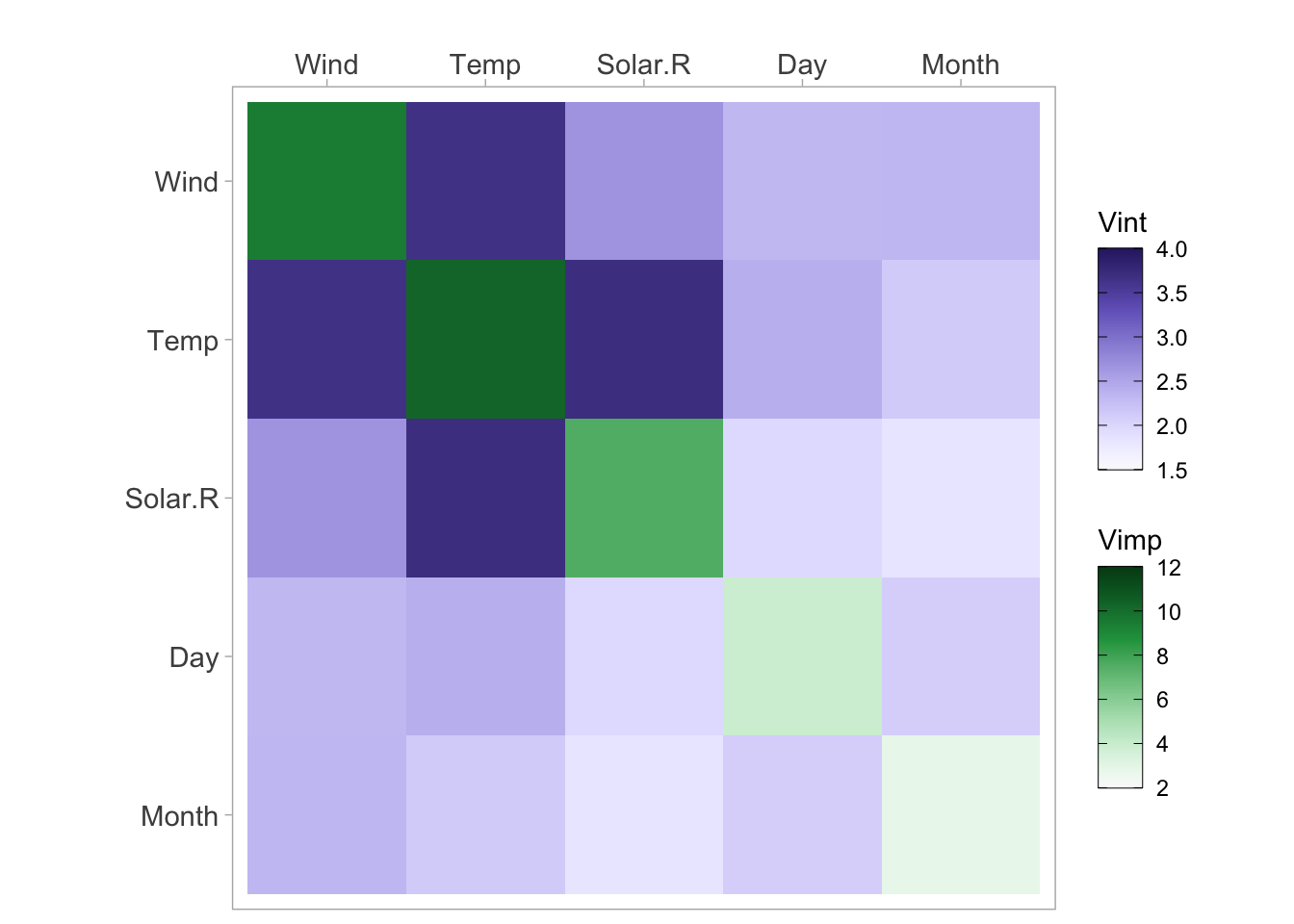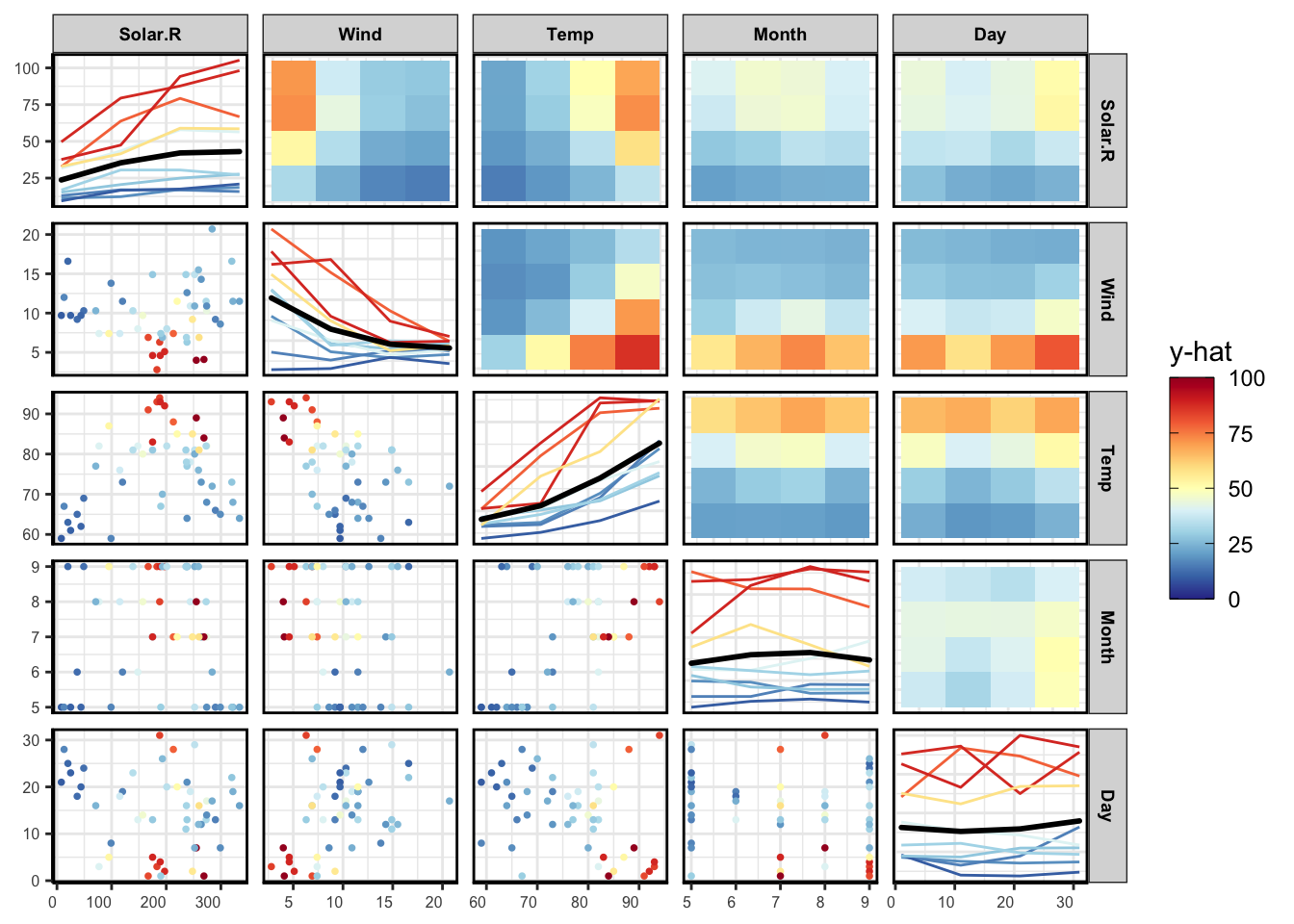mlr3 - k-nearest Neighbours
mlrVivid.RmdThis guide is designed as a quick-stop reference of how to use some
of the more popular machine learning R packages with vivid.
In the following examples, we use the air quality data for
regression.
mlr3 - k-nearest Neighbours
The mlr3 package in R offers a modern, object-oriented
framework for machine learning tasks in R, providing tools for data
preprocessing, model training, evaluation, and tuning. Here, we fit a
k-nearest neighbours model to the data.
Regression
# load data
aq <- na.omit(airquality)
# Define a regression task
task <- TaskRegr$new(id = "airquality", backend = aq, target = "Ozone")
# Train a k-nearest neighbours model using mlr3
learner <- lrn("regr.kknn")
m3 <- learner$train(task)
# vivid
vi <- vivi(data = aq, fit = m3, response = 'Ozone')Heatmap
viviHeatmap(mat = vi)
PDP
pdpPairs(data = aq,
fit = m3,
response = "Ozone",
nmax = 50,
gridSize = 4,
nIce = 10)